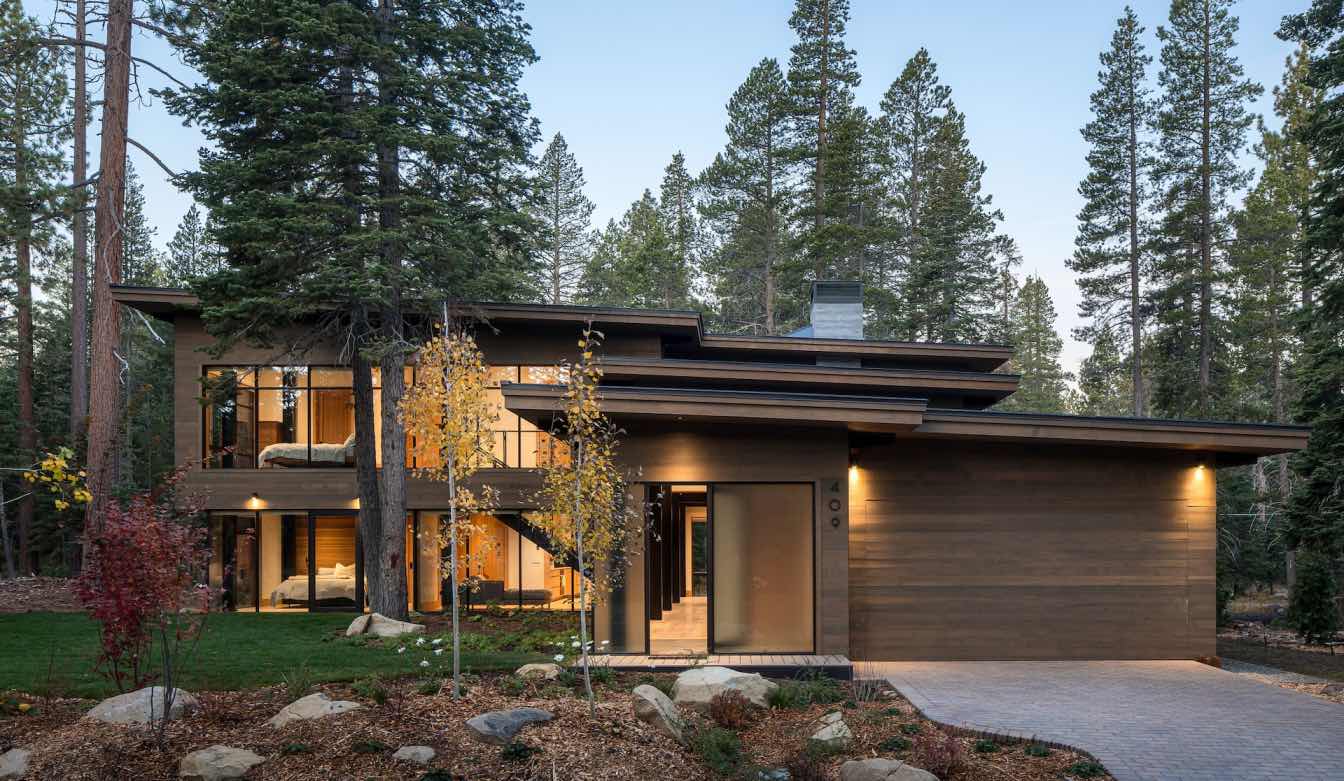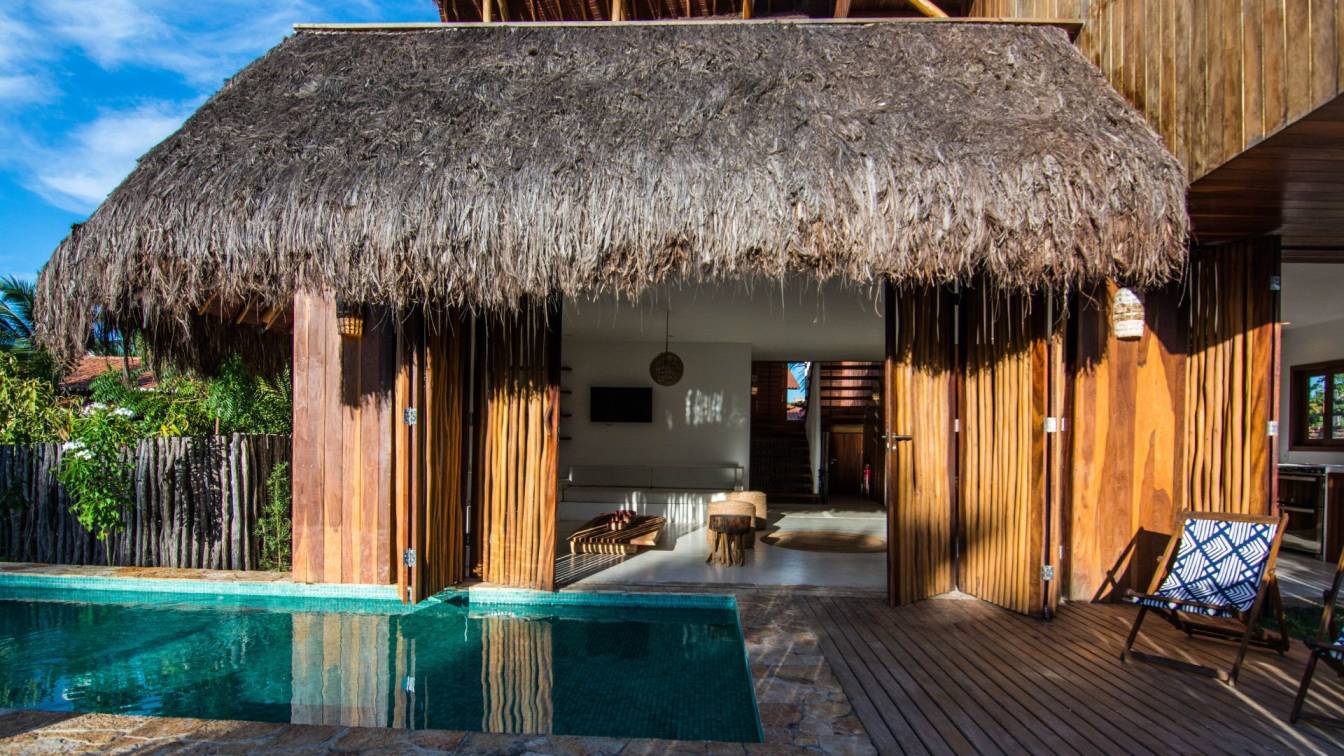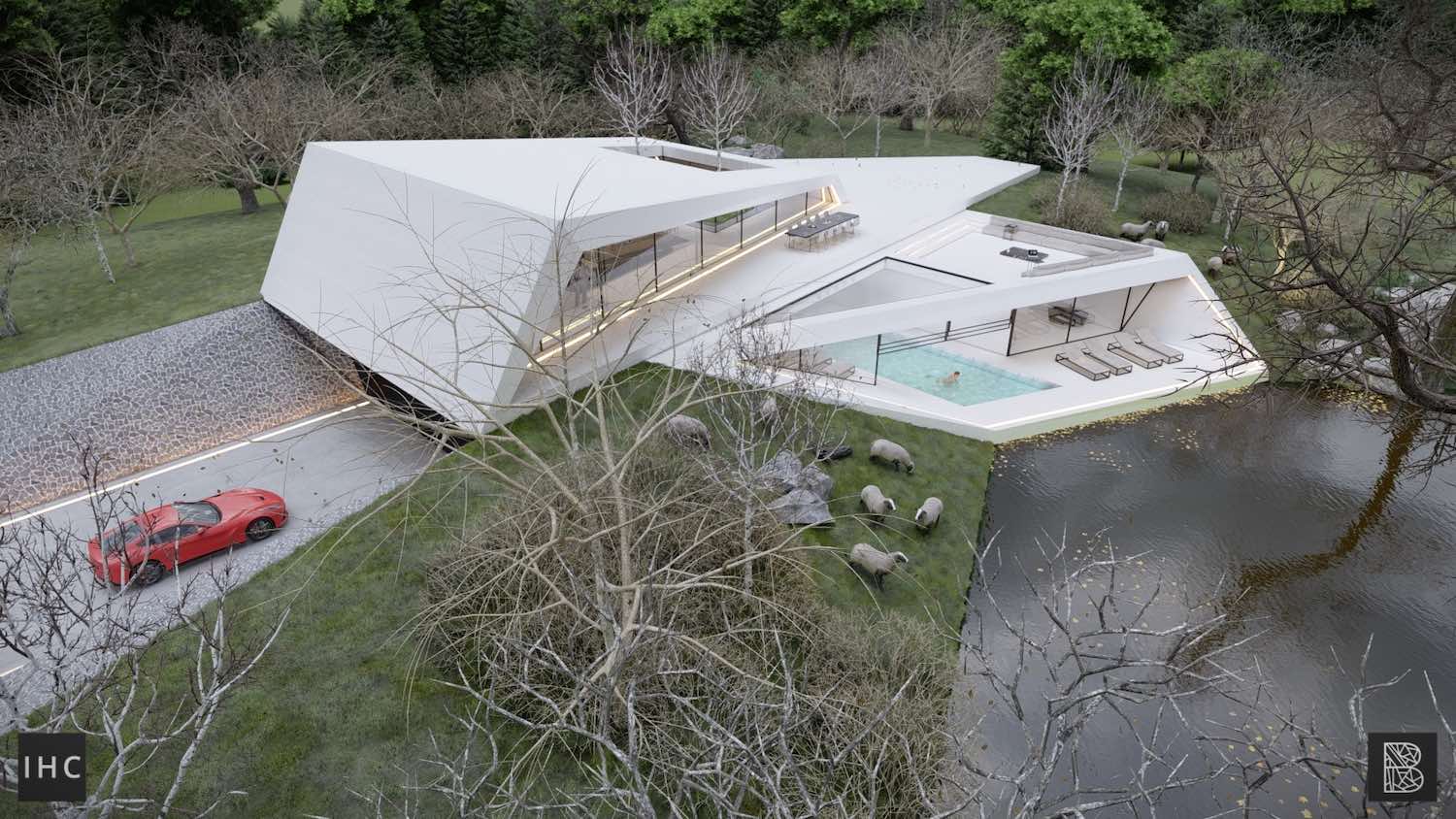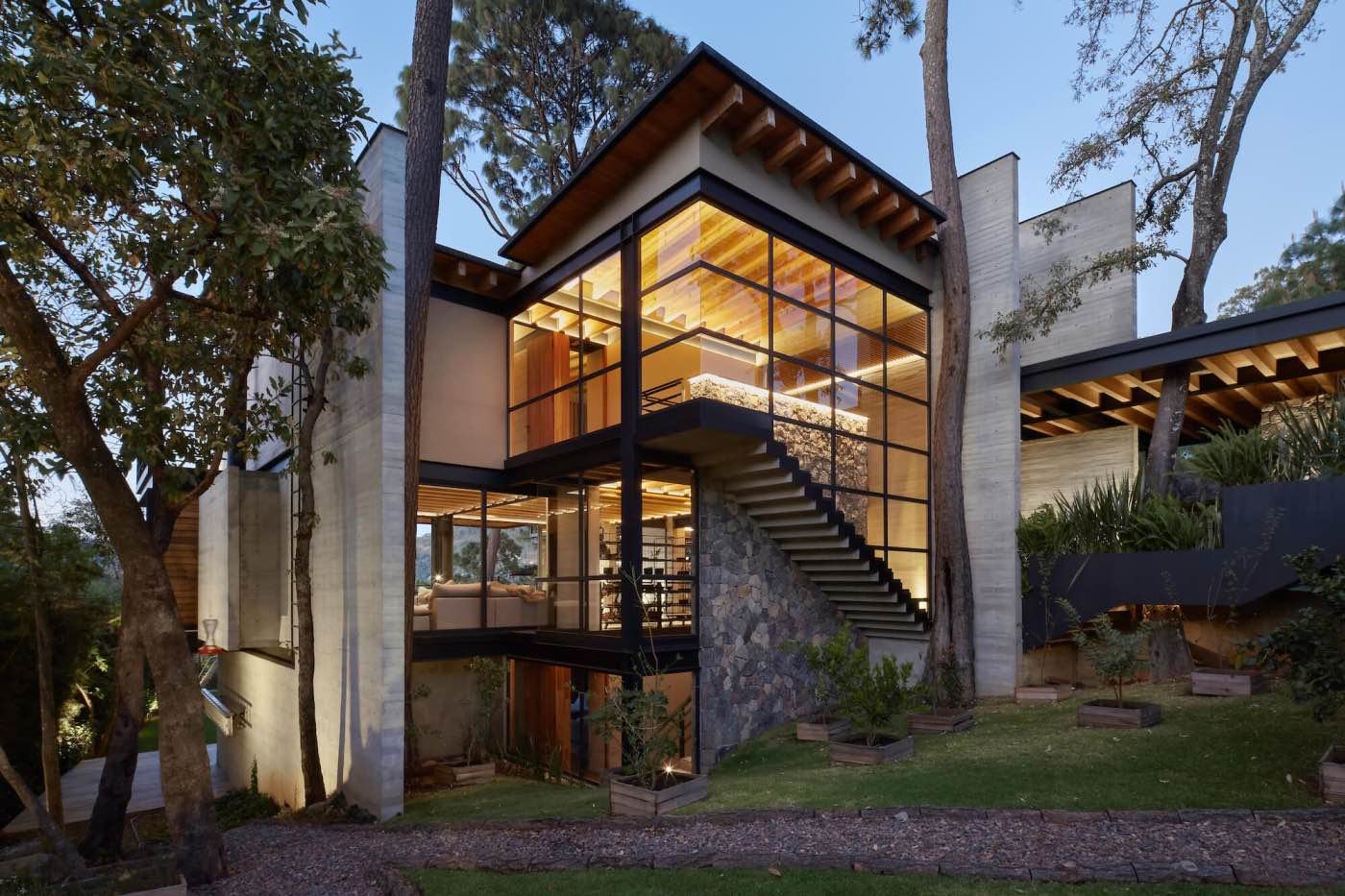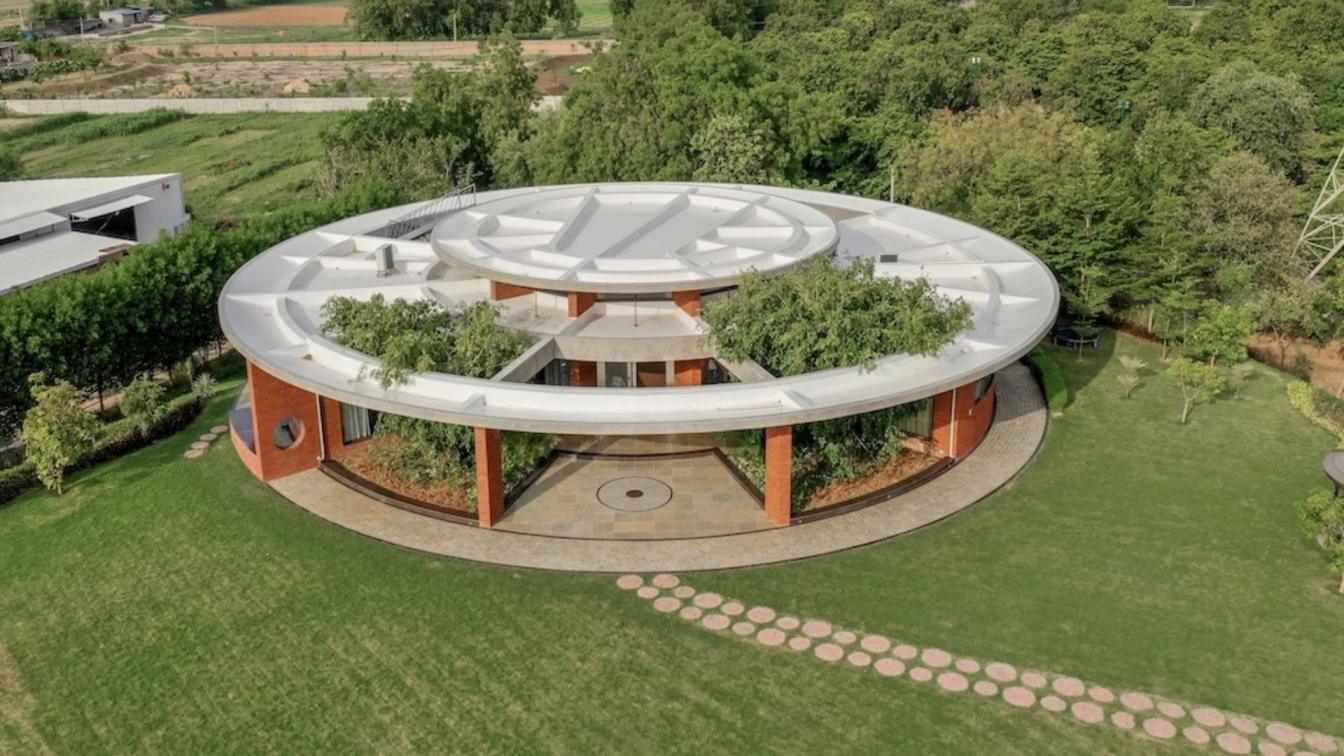MacCracken Robinson Architects: Our introduction to the Tahoe site was in late winter on a clear sunny day with filtered light and long shadows through snow laden fir and pine bows. It made a strong impression, stored for future consideration but the impetus for design came soon after the spring snow melt. A powerful sense of horizontal layering of vegetation and various stages of decomposing downed timber on the two acre site, juxtaposed with pine and fir trees and dense canopy of the surrounding forest. The site is located near the historic 1960 Olympic Nordic track and situated on the edge of a wetlands and seasonal stream.
The home owners were previous clients and dreamt of having a retreat in the Sierras away from their home base in Berkeley, CA. Skiers, bike riders, hikers and boaters, they found the ideal central location for their home base near Lake Tahoe.
The home is organized as a series of linked spaces, each of which provide a unique sensory experience and connection to different parts of the site, both vertically and horizontally. The design includes extensive use of glass to create a true indoor/outdoor connection and maximize natural light. At the center of the site are two large fir trees, which the building respectfully wraps around in an L shape to create a focal point in the landscaped courtyard.
An intentionally muted yet refined palette of natural materials including cedar, oak, fir, and steel are used to harmoniously blend with the surroundings. The construction includes advanced details such as thermally broken steel beams supporting layered roof planes engineered to hold snow rather than shed it. Designed to resist significant load, we chose to expose the steel structure as a recurring element in the interior spaces. The resulting columns and support beams contribute to the familiar design aspects in each room, and provide a better understanding of how the building was constructed. The second floor features cantilevered volumes that reach out into the nearby evergreen limbs, likening the experience to being in a tree house. The house incorporates features such as radiant heating, solar panels, and operable windows for passive cooling. Fire safety measures include the use of naturally fire resistant materials, a Class A roof construction, sprinklers and drought-tolerant landscaping beyond the defensible space.

What inspired the design and concept of the Arboreal House in Lake Tahoe, and how does it integrate with its natural surroundings?
We first saw the site in early Spring with about 8 feet of snow on the property and it was a pristine landscape. Two months later the exposed forest floor revealed strong horizontal layering of down timber and debris in contrast with the standing trees. We were inspired to design a building that referenced that contrast.
What were some of the major challenges faced during the design and construction of the Arboreal House, and how were they overcome?
Entitlements, permitting and agency approvals are often time consuming and expensive in the Tahoe basin. The design process started in May and we were able to submit permit drawings in early July. The fast submittal allowed us to focus on other agency requirements while it was in review. Construction was started in early October just before restrictions on excavation began at the end of October.
Are there any future plans or expansions for the Arboreal House, or similar projects in the Lake Tahoe area?
The home was carefully fitted to the site both in volume and footprint. There are no plans for expansion.
Can you elaborate on any sustainable or eco-friendly features incorporated into the Arboreal House project?
The Arboreal House utilizes all electric appliances, a radiant floor heating system, solar panels, and passive heating and cooling strategies.


















